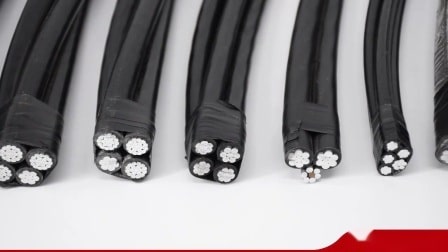Project Report For ABC Cable Manufacturing
Introduction
The project report for ABC Cable Manufacturing is as follows.
Aerial bundled conductors, or ABC for short, are overhead power lines that are made up of numerous insulated phase conductors that are tightly wrapped together, generally with a bare neutral wire. Aerial Bundled Cable (ABC) is a new approach for power delivery over the head (OH). This type of overhead power line follows the same principles as bundled conductors, except that the conductors are closer together and each is enclosed by an insulating layer (except for the neutral line). Aerial Bundled Conductor cables can be used in overhead distribution systems to replace bare conductor cables.
Project Report Sample On ABC
Cable Manufacturing
Get Completely Custom Bankable Project Report
It’s perfect for cities with crowded electricity distribution and limited highways and by-lanes. ABC cables are built using the most up-to-date techniques, and they undergo extensive quality testing to assure their safety and dependability.
External forces (wind, falling branches) can produce short circuits, but only if the insulation is abraded. Can stand in close proximity to trees/buildings without causing a spark if touched. Tree pruning isn’t essential in most cases.
Crossbars and insulators are not required, making installation easier. Easier to install and string, less labor demanding, requires fewer construction materials and is more visually pleasing. Insulating bridging wires are required at junction poles to link non-insulated wires on both sides. One of these splices can be skipped using ABC.

Environmental protection has been a typical external demand and development trend encountered by cable makers all over the world in recent years in the sphere of product application. The United States, Japan, and Europe are the world leaders in the research and manufacture of environmentally friendly cables, with reasonably developed production technologies.
Harmful elements including lead, mercury, cadmium, hexavalent chromium, polybrominated diphenyl ethers, and polybrominated biphenyls are forbidden in new electronic and electrical equipment put on the market by the European Union.
Theft of electricity has been made more difficult and visible. In comparison to both bare conductor overhead systems and subterranean systems, less line maintenance and inspection are required, resulting in improved dependability. In the event of a suspension system failure, insulated conductors prevent accidental contact and supply can be maintained temporarily.
Market Potential Of ABC Cable Manufacturing
Expenses

Product Cost Breakup

Reveneue Vs Expenses

Market Trend

Market size (value, capacity, production, and consumption) of Aerial Bundled Cable in major regions such as the United States, Europe, Asia Pacific (China, Japan), and other regions. Aerial Bundled Cables are power lines that use many insulated phase conductors that are tightly bundled together, generally with a bare neutral conductor. Cables and conductors are one of the most important components for any country’s T&D network to expand and strengthen.
India’s cable and conductor industry has risen at a rapid pace in recent years as a result of investments in the power and infrastructure sectors. With a significant number of organized players, the present industrial base is well established. As of today, a number of government efforts and programs have been implemented to assist build a good market for cables and conductors in the country, owing to a growing emphasis on developing a robust T&D network in the country to fulfill the rising need for dependable electricity.
As per different projections, the sector, which has been expanding at a pace of approximately 15% for the past five years, will begin to grow at a CAGR of above 20% in the next five years. Despite this, demand for cables and conductors has remained high due to increased industrialization and a growing population’s need for a reliable and efficient power supply. Going forward, based on the government’s investments and different efforts in the power and infrastructure sectors, this demand trend is projected to continue for the industry in the future. In 2018, the global market for cables was valued at $181.3 billion, up 4% from the previous year.
From 2019 to 2024, it is expected to grow at a CAGR of 4.5-5 percent to $210.47 billion. The worldwide cables market is predicted to be driven by rising energy consumption in developing and established nations, along with increased infrastructure expenditure.
The market’s growth has been hampered by the slowing economy and regulatory restrictions regarding interconnection agreements. One of the primary drivers of the cable market’s overall expansion is urbanization. Submarine and underwater cables are in high demand due to the necessity for power grid interconnections in heavily populated areas. Underground cables save space while providing dependable electrical delivery.
Environmental rules that look at the influence of electrical cables on the environment, the safety of electrical installations, and the health consequences of the materials used in cable manufacture have resulted in a slew of new product development and innovation. These laws have aided the introduction of new goods, such as halogen-free flame retardant chemicals, as well as the implementation of innovative methods that use less energy and make better use of raw resources.

